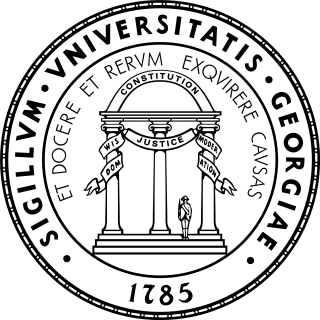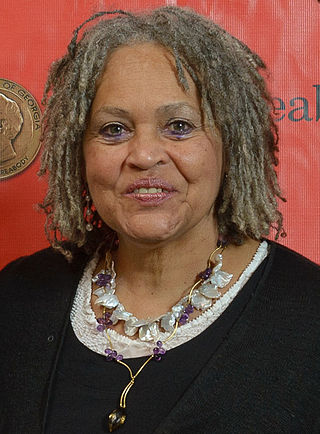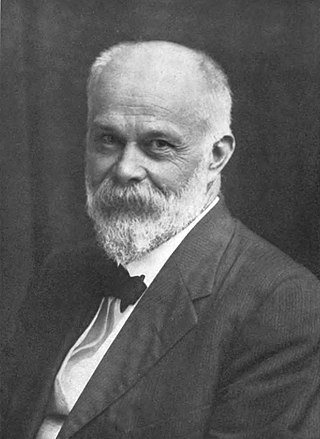Background
Segregation at the University of Georgia
Until the later half of the 20th century, the University of Georgia (UGA, located in Athens, Georgia) was a racially segregated university that did not admit African Americans. In 1867, there was an attempt by several freedmen to gain admittance to the university, but with the 1896 U.S. Supreme Court ruling of Plessy v. Ferguson and the legal doctrine of separate but equal, UGA, like many others in the United States, remained segregated into the early 20th century. [1] However, starting in 1936, the National Association for the Advancement of Colored People (NAACP) began a campaign that aimed to desegregate universities in the Southern United States. These efforts were led primarily by Charles Hamilton Houston and the NAACP Legal Defense and Educational Fund. [2] Over the next several decades, a number of Supreme Court cases (such as Murray v. Pearson , Missouri ex rel. Gaines v. Canada , and McLaurin v. Oklahoma State Regents ) led to several all-white universities admitting African Americans for major programs not offered at African American universities. [3] In Georgia, Governor Eugene Talmadge's opposition to integration led to the Cocking affair of 1941, wherein several members of the Georgia Board of Regents who were suspected of supporting integration were replaced or dismissed by Talmadge. [4] In 1950, as part of NAACP efforts to integrate UGA, Horace Ward applied to the University of Georgia School of Law. [5] He was denied entry, with legal challenges against the university eventually ruled moot. However, in 1954, the U.S. Supreme Court's landmark decision in Brown v. Board of Education ruled that racial segregation of public schools was unconstitutional, leading to greater integration in the proceeding years. [2] Despite this, by 1960, public universities in the southern states of Alabama, Georgia, Mississippi, and South Carolina still remained completely segregated. [6]
Holmes and Hunter apply to UGA

In summer 1959, Hamilton E. Holmes and Charlayne Hunter applied for admittance to UGA. [2] [7] Both students had attended Turner High School, an all-African American high school in Atlanta. [8] Holmes had been the valedictorian, [9] class president, and team captain of the football team, while Hunter was the lead editor for the school newspaper and had similarly finished near the top of her class. [8] Holmes hoped to enroll in the pre-medical track at UGA, while Hunter intended to study journalism. However, two weeks after the two students had applied, Registrar Walter Danner denied their admission. [9] According to the registrar, the freshman dormitories were at full occupancy and no more students could be admitted. [2] [10] [11] Following the rejection, the two students enrolled in other colleges for the fall semester, [9] [8] with Holmes going to Morehouse College and Hunter going to Wayne State University. [11] However, the two continued to reapply to UGA every semester, each time again being denied based on full occupancy. [2] In summer 1960, after again being denied entry for the fall 1960 semester, they appealed the decision to Chancellor Harmon White Caldwell of the University System of Georgia (USG), who refused to take action on the matter. Subsequently, they petitioned the Board of Regents for admission, but as their decision would take several months, attorneys representing Holmes and Hunter began seeking a preliminary injunction from the United States District Court for the Middle District of Georgia that would prohibit UGA from denying them admission based on race. [12] Attorneys representing the applicants included Donald L. Hollowell, Vernon Jordan, Constance Baker Motley, and Ward, who, after being denied entry to UGA, had enrolled at the Northwestern University Pritzker School of Law. [2]
On September 13, 1960, United States federal judge William Augustus Bootle started a hearing on the matter, wherein Attorney General of Georgia Eugene Cook claimed that the applicants had filled out their admission forms incorrectly and, as the Board of Regents had not yet met to decide on their appeal, they had not exhausted all administrative remedies for the case. Bootle did not issue an injunction, but did order the Board to meet and issue a decision on the admissions for Holmes and Hunter within 30 days. After almost the entire allotted time had passed, the Board issued their decision, which was to reject their admission. [12] Following this, Bootle scheduled a pre-trial hearing for November 18 and ordered that the trial would begin the second week of December in the Athens division of the court. Holmes v. Danner, as the case was known, began on December 13. [13] The trial lasted several days, and on January 6 of the following year, Bootle ruled that Holmes and Hunter be immediately enrolled at UGA. The following day, Holmes went to the campus to officially enroll. [14] On January 9, both individuals returned to the campus to register for classes and, while there, encountered mobs who yelled racial slurs at them. [8] Over the following weekend, there were additional demonstrations, included some effigy and cross burnings on campus. Journalist Calvin Trillin, who was reporting on the integration at UGA at the time, reported seeing one such attempt on the campus's football practice field. [15]













